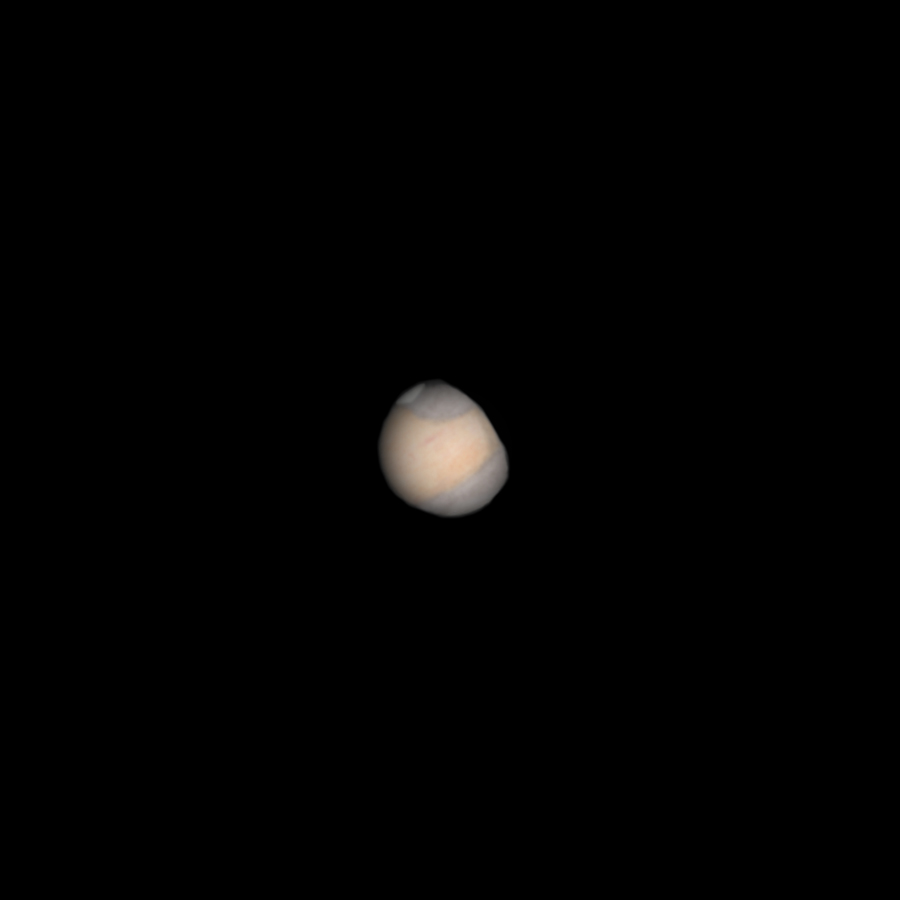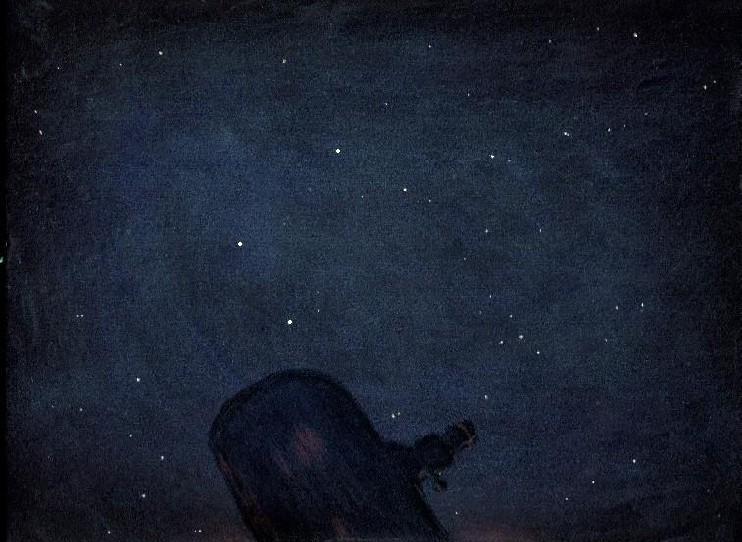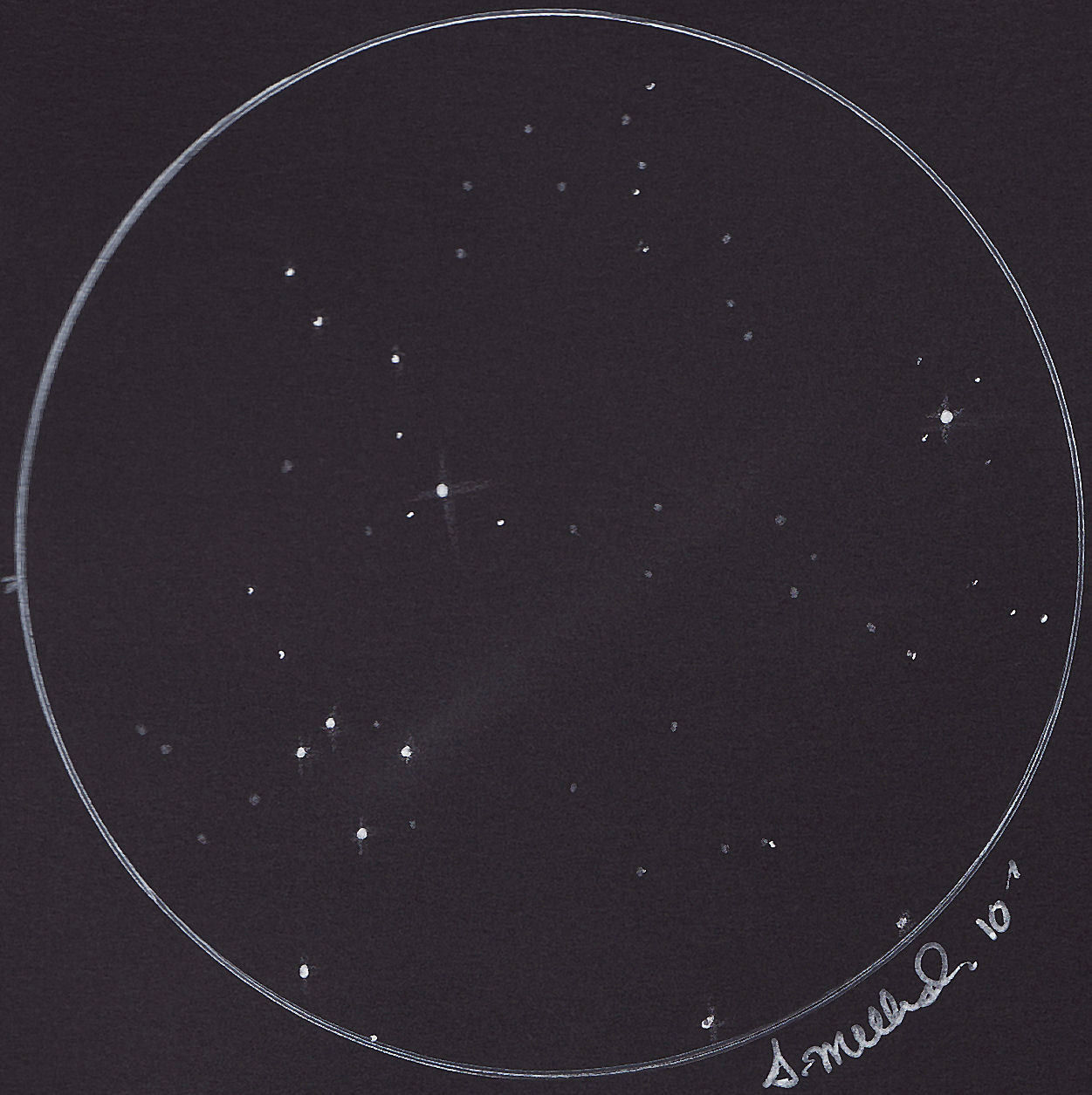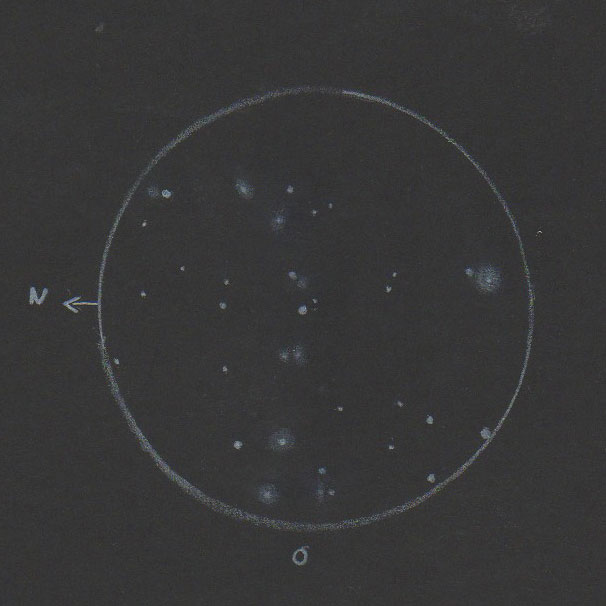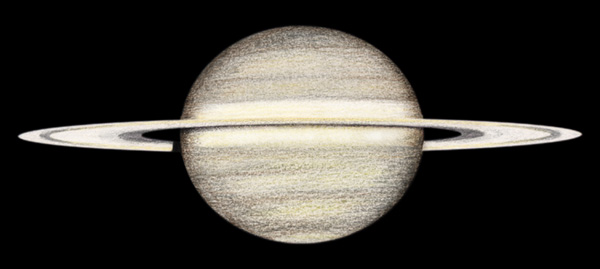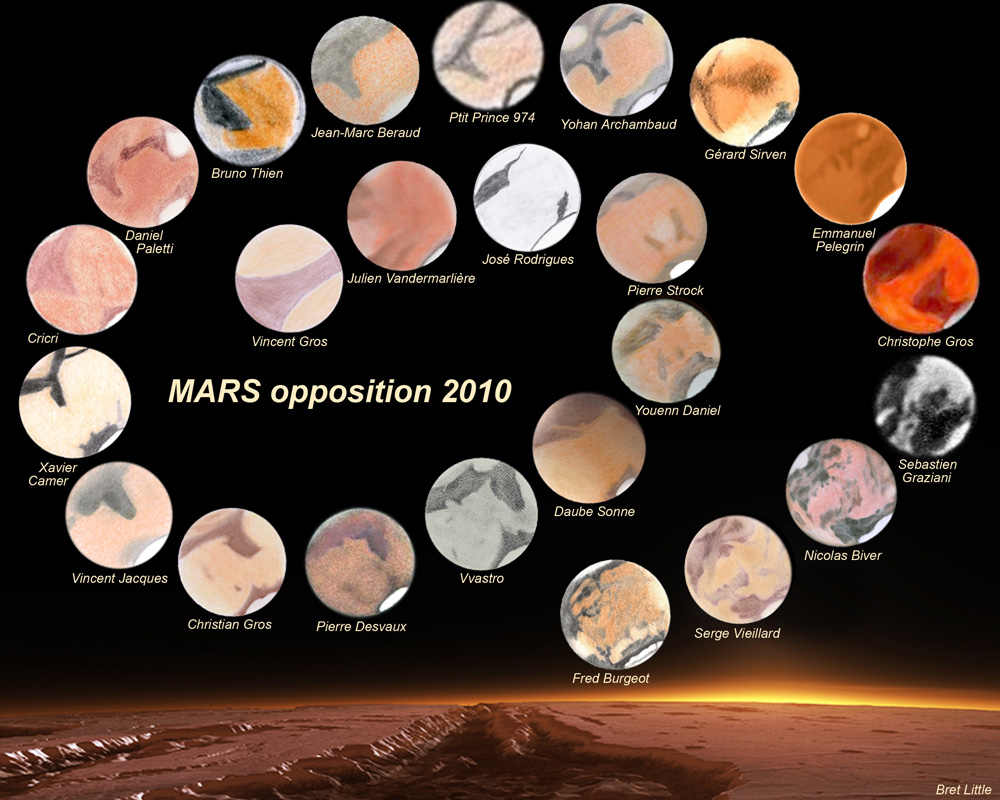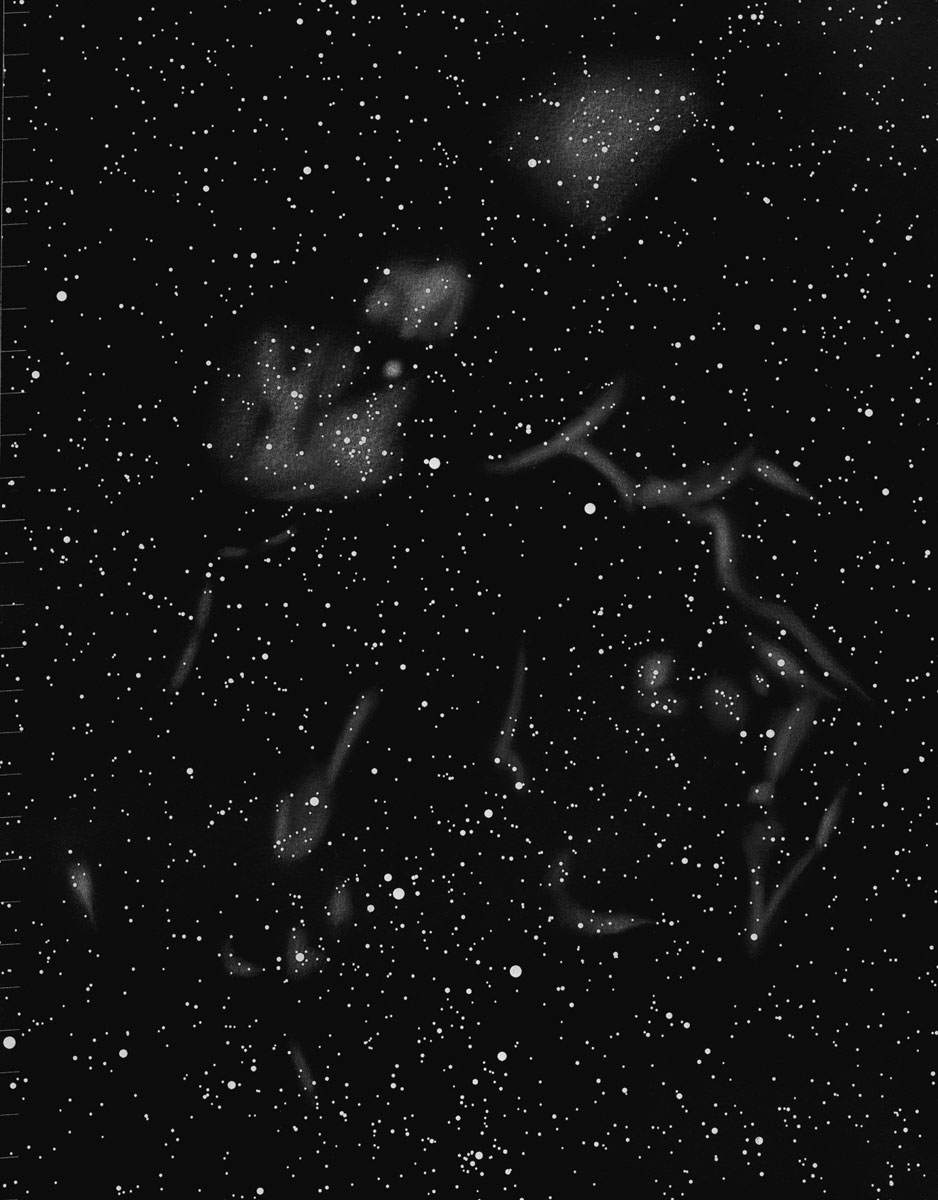
Vela Supernova Remnant
Sketch and Details by Gábor Sánta
Dear ASOD,
I want to post my newest drawing about a very interesting deepsky object.
Nearby Supernova Remnant
Object: Vela Supernova Remnant
Constellation: Vela
Date: 06. 04. 2010.
Time: 18:20-19:15 UTC
Location: 27 m above sea level next to Kalo Nero, SE Crete, Greece, EU
Instrument: 130/650 (5″ f/5) Newtonian, 32 mm Plossl (20x magn.)
Filter: O III
Limiting magnitude: better than 6.5
Printed background used
Composite (multiple-field) observation
From 2 to 10 April we three – all Hungarian amateur astronomers – were at Crete to enjoy near-south deepsky wonders in Puppis, Vela, Centaurus and Scorpius because these constellations or southern parts of them are never seen from our home. Observed Omega Cen, Cen A, NGC 2451, NGC 2477, NGC 6231 and more in the very clear sky. Light pollution was minimal.
Cause of its 800 light year distance, the Vela SNR is the nearest known and observable remnant of an exploding star (connecting to Vela Pulsar). Cause of its location in northern Vela, culminate at 10-12 deg. above the sea level (our fantastic southern horizon). So I tried to hunt its mystic filaments spread in an 8 deg diameter circle. And finally I was sucesful, I could see – by the help of a detailed map – most of dim filaments of this really interesting supernova remnant. North to this, you can see Gum 14 and Gum 17, between them the cloudy Collinder 197. These HII regions were brighter than the remnant. To save time, I used a background printed before.
I would like to suggest observing Vela SNR if you can see it at least 10-15 deg. above your horizon, southern the 35th parallel.
Best regards,
Gabor Santa
Szeged, Hungary
Leader of Deep-Sky Section in the Hungarian Astronomical Association


